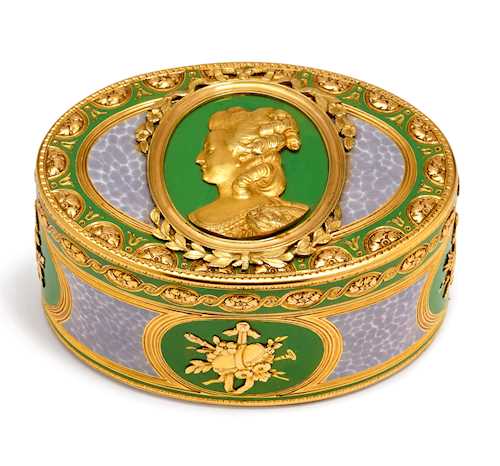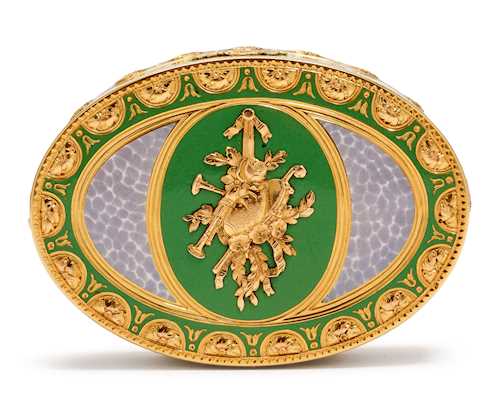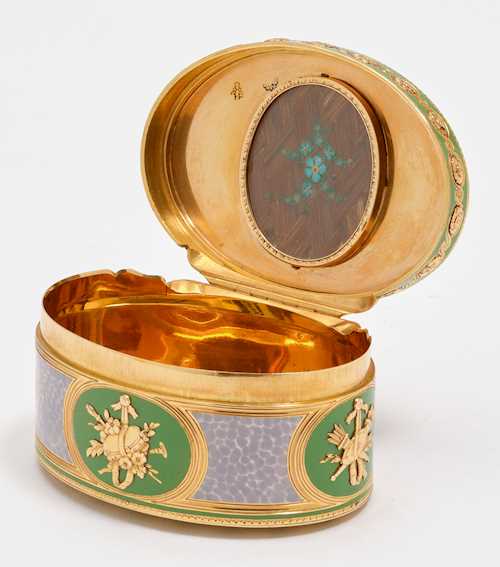
Lot 1159 - A208 Decorative Arts - Thursday, 21. March 2024, 01.30 PM
IMPORTANT GOLD AND ENAMEL TABATIÈRE
As with most tabatières made by Le Bastier, the inner base of the box is stamped with the reference number (here No. 504).
Original storage box made of green lizard leather.
[Art.ArtText.Text@@1('[Art.BoId],21')]
[Art.ArtText.Text@@1('[Art.BoId],22')]
[Art.ArtText.Text@@1('[Art.BoId],23')]
[Art.ArtText.Text@@1('[Art.BoId],24')]
[Art.ArtText.Text@@1('[Art.BoId],25')]
- Art dealer Martina Erica Spica, Lugano.
- Private collection, Switzerland.
Charles Le Bastier was a renowned goldsmith of his time, who excelled in particular with his high-quality and magnificent tabatières. The son of a Parisian merchant, he was apprenticed to Gabriel Vougny, Marchand-orfèvre-joaillier, on October 3, 1738 at the age of 14. With the support of Jean Moynat, who was himself a well-known goldsmith, Le Bastier became a master goldsmith on December 20, 1754. He worked in the same premises in the Rue Thévenot, near the Rue St-Denis, until his last mention in 1783. In the special tax list of 1774, Le Bastier was ranked 9th in the order of importance of his business. Since several of the goldsmith's boxes are preserved in various collections (most notably in the Louvre and the Thurn und Taxis Museum in Regensburg), the development of his work can be traced from the first silver boxes with colored gold decorations, through a series of elaborately chased but comparatively plain gold boxes, to the almost immediately recognizable gold and enamel boxes of his mature period.
The box on offer combines several of the maître's characteristic design elements, such as the monochrome enameled medallions, applied bas-reliefs and the grey and white speckled enamel, which can be found in a box in the Louvre in Paris (inv. no. OA 2205) or in the Metropolitan Museum (inv. no. 1976.155.20).
The hair arranged in a diamond shape inside the box, which is attributed to the French Queen Marie-Antoinette, is a special feature. In the 18th century, it was a common practice to present tobacco tins on certain occasions and as a special token of recognition and friendship. It is generally known that Marie Antoinette had such gifts decorated with strands of her hair to emphasize the bond that such a gift attested to. For example, a jewelry medallion and a ring in which Marie-Antoinette's hair was inserted can be found in the Musée Carnavalet in Paris (inv. no. OM 1677 and inv. no. OM 3274), in the British Museum and in private collections.
CHF 10 000 / 15 000 | (€ 10 310 / 15 460)
Sold for CHF 16 250 (including buyer’s premium)
All information is subject to change.







